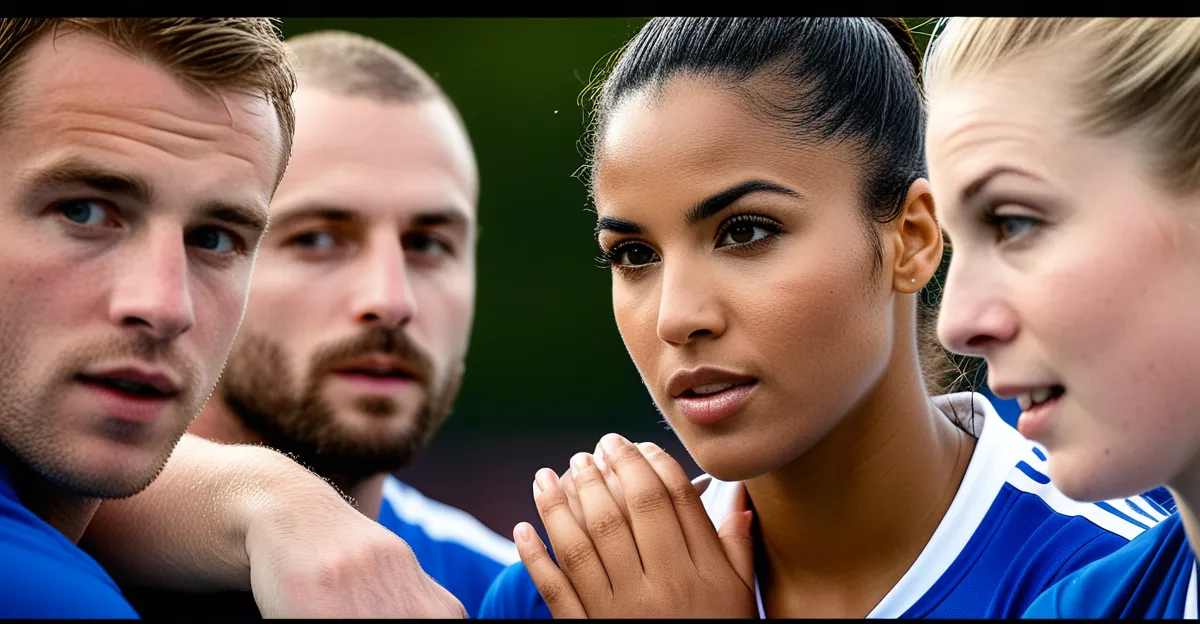Overview of Inclusivity and Diversity in UK Sports
The UK sports sector has been increasingly focusing on the importance of inclusivity and diversity, recognising it as a crucial element for fair competition and equitable access. Diversity in sports refers to a mix of individuals of different backgrounds, including race, gender, and socio-economic status, having equal opportunities to participate. Inclusivity, on the other hand, is the practice of ensuring that all individuals feel valued and have access to the same opportunities, often necessitating specific measures to support underrepresented groups.
The current landscape of UK sports is evolving, with growing representation from various groups, yet challenges persist. Initiatives have been launched to encourage diversity in sports; however, systemic issues still restrict comprehensive inclusivity. Governing bodies like UK Sport play a pivotal role in fostering this change by implementing policies and programs aimed at increasing participation from underrepresented communities. These bodies also set frameworks for clubs and associations to follow, ensuring compliance with equality standards.
Also to see : How Do British Sports Impact Cultural Identity?
Understanding and enhancing inclusivity in sports not only enriches the competitive environment but also helps combat discrimination, promoting social cohesion. By focusing on the broader UK sports initiatives, we can see strides being made that demonstrate a commitment to achieving greater diversity across various levels of sport.
Key Initiatives Promoting Inclusivity and Diversity
In the UK, a range of diversity programs have been launched under the umbrella of comprehensive UK sports initiatives, aiming to foster inclusivity in sports. These programs are designed to tackle the historical lack of representation among different populations, such as ethnic minorities and women, within the sports sector. By implementing structured approaches, these initiatives work to dismantle barriers and provide equitable access to sporting opportunities.
Also to see : How Can Effective Team Strategies Transform UK Sports Performances?
Government Bodies and Sports Associations
UK Sport and other governing bodies spearhead several initiatives aimed at promoting diversity. They establish frameworks that require compliance from sports clubs, fostering an environment that prioritizes inclusivity. For instance, these organizations have mandated gender balance in sports leadership roles and have introduced funding programs that aim to elevate the participation of underrepresented communities.
Community-Driven Initiatives
Grassroots-level programs initiated by community organizations play a vital role in advancing inclusivity in sports. These initiatives often focus on offering free or subsidized access to sports facilities for individuals from disadvantaged backgrounds. Community sports events, organized to bring people together from various walks of life, have become pivotal in spreading awareness and engaging underrepresented groups in physical activities.
Role of Educational Institutions
Educational institutions are cultivating inclusive sports environments through targeted policies and practices. Schools and universities integrate sports into their curricula, not only as a competitive activity but also as a social equalizer. By promoting team sports, they emphasize collaboration among diverse student groups. In doing so, they help break down social barriers and cultivate future leaders who value diversity in sports, laying the groundwork for ongoing advancement in the field.
Impact of Sports on Underrepresented Communities
Sports play a profound role in fostering social change, especially within underrepresented communities. Through various sports initiatives, these groups gain opportunities for improved health, social integration, and personal development. Case studies from initiatives like “Kick It Out” highlight how football acts as a platform combatting racial discrimination by promoting diversity in sports. Participants often share testimonials illustrating increased community cohesion and personal empowerment resulting from engagement in these programs.
For instance, a participant in a community-led basketball initiative might say it provided a safe space to not only excel in sports but also to form cross-cultural friendships. Such programs often show measurable social changes, including reduced antisocial behavior and improved academic performance among youth. By allowing participation regardless of economic or cultural background, sports initiatives bridge gaps that formal education sometimes cannot, highlighting the transformative impact of sports on societal structures.
Challenges in Achieving Inclusivity and Diversity
Inclusivity in sports remains a significant goal for the UK, yet several challenges continue to hamper progress. At the core are systemic barriers, deeply rooted institutional practices that create unequal access to sports. For instance, funding disparities often disadvantage minority leagues, reducing their ability to grow and compete equally. The gap in resource allocation highlights the need for reformed policies to support underfunded communities.
Moreover, societal attitudes pose a persistent obstacle. Common misconceptions about certain groups’ competencies or interests can hinder inclusive efforts. These biases, whether based on race, gender, or economic background, often limit participation and advancement opportunities for marginalized communities. Changing such perceptions requires sustained advocacy and education to highlight the value of diversity in sports.
Real-world examples further illustrate these adversities. Female athletes, for instance, frequently encounter gender-based discrimination and lack of sponsorship. Likewise, ethnic minorities might face cultural bias, impacting their progression in sports hierarchies. Addressing these diversity issues in sports necessitates comprehensive measures, including targeted outreach programs and continued dialogue on equality. Collaborative efforts are essential to dismantle barriers and foster an environment where all athletes can thrive.
Future Directions and Recommendations
Fostering the future of inclusivity in sports involves a forward-thinking approach that embraces cutting-edge innovations and robust strategies. As the sports landscape continues to evolve, implementing technology and leveraging social media have become crucial components in advancing diversity initiatives.
-
Innovations and Strategies: Embracing digital platforms and technological tools can significantly enhance diversity in sports. Apps and online networks tailored to connect athletes from various backgrounds can promote broader participation. Moreover, virtual reality (VR) training and e-sports platforms offer accessible entry points, breaking geographic barriers and enabling underrepresented athletes to demonstrate their skills.
-
Role of Technology and Social Media: Technology plays an essential role in building inclusive sports environments. Social media platforms provide a powerful means to raise awareness and amplify diverse voices, offering a stage for advocacy and storytelling. Interactive campaigns can engage communities and drive participation by making sports more relatable and accessible to everyone.
-
Recommendations for Policymakers and Sports Organizations: To improve representation, policymakers and sports organizations should prioritize inclusive policymaking and resource allocation. Recommendations include creating explicit strategies geared towards supporting diversity in sports infrastructures, providing funding for grassroots programs, and ensuring fair representation in decision-making roles. Engaging with community leaders and forging partnerships with educational institutions can help align objectives and build a coherent framework for lasting change.
These actions are pivotal in supporting a more equitable sports sector, where all athletes can thrive and contribute to an inclusive sporting culture.









